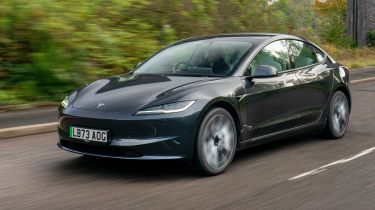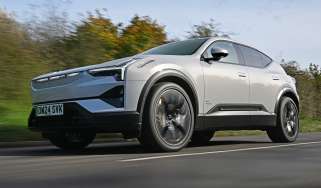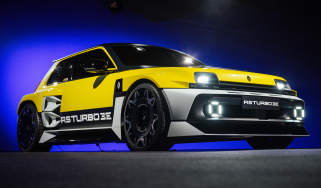Tesla Model 3 review
The facelifted Model 3 still sits towards the top of the executive EV class

Pros
- Superb performance and range
- Brimming with tech
- Superb value-for-money
Cons
- Rivals more fun to drive
- Interior a case of form over function
- Model Y more practical
| Range | Wallbox charge time | Rapid charge |
| 318-390 miles | 9-12hrs (0-100%, 7.4kW) | 25-27mins (10-80%, 250kW) |
Tesla Model 3 verdict
It’s hard to deny the Tesla Model 3’s place as one of the most accomplished and desirable electric cars you can buy. Whether you’re looking to cross the country on a single charge or scorch a supercar on the dragstrip, there’s a Model 3 to suit you.
With this in mind, it’s impressive how much the facelifted model improves on the original Model 3. More tech, a longer range and an overall much more refined driving experience mean the Tesla is still a solid competitor in the fiercely-fought executive car market. The only real drawback is the existence of the much more practical Model Y, which isn’t that much more expensive.
Range details, specs and alternatives
The Tesla Model 3 quickly became a firm favourite of electric car buyers around the world when it first arrived in 2017. Solid real-world battery range, genuinely rapid performance and oodles of impressive technology were just some of the reasons that Tesla’s first mainstream model earned itself such a loyal fanbase, but the executive EV market has grown rapidly in the past few years.
As well as contending with longer-serving rivals such as the Polestar 2, BMW i4 and Porsche Taycan, an increasing flow of newer rivals such as the Hyundai Ioniq 6 and BYD Seal meant the Model 3 was ripe for a thorough midlife facelift in order to stay competitive.
It was a thorough facelift, too, consisting of a revamped exterior design, improved build quality, a revised interior and increased battery ranges across the line-up. Unfortunately, all of these improvements mean the cost has inevitably crept upwards, but the Tesla Model 3 still manages to undercut several competitors with a starting price of around £40,000.
There are three versions of the current Model 3 to choose from here in the UK. At the top of the range sits the ludicrously fast Model 3 Performance which produces 453bhp from its dual-motor powertrain, and this is good for an alarming 0-60mph time of just 2.9 seconds. This means this electric executive car will quite happily take on most supercars, yet it’ll also cover up to 328 miles on the WLTP combined cycle.
The regular Model 3s are far from sluggish, though, as even the base Rear-Wheel Drive model still goes like the proverbial clappers; a 242bhp rear-mounted electric motor paired with a 58kWh battery gets the Model 3 RWD from 0-60mph in a hot hatch-rivalling 5.8 seconds and provides a claimed range of up to 318 miles.
Upgrading to the Tesla Model 3 Long Range costs around £10,000 more than the base car, but this adds an additional electric motor on the front axle to provide four-wheel-drive traction, as well an increased output of 346bhp and a 0-60mph time of just 4.2 seconds.
Key to this version’s ‘Long Range’ designation is its larger 70kWh battery pack, which is sufficient for a range of up to 390 miles. Stick with the standard 18-inch wheels (19-inch alloys are available) and Tesla claims the Model 3 Long Range is actually capable of up to 421 miles on a charge.
No matter which Model 3 you choose, all can charge from 10-80% in around 25 minutes at one of Tesla’s many Superchargers across the nation. While the smaller-battery Model 3 tops out at 170kW, dual-motor versions get a faster maximum DC rapid charging speed of 250kW, allowing them to charge in around the same time.
Beyond choosing a powertrain, there isn’t much scope for customising your Model 3; there’s two interior shades – black or white – plus changing the colour of your car from the basic white can cost over £1,000.
Tesla also offers several tiers of its patented ‘Autopilot’ driver assistance tech. Do note that while the brand bills the near-£7,000 top-of-the-range package as ‘Full Self-Driving’, this isn’t exactly true – you still need to keep your hands on the wheel and provide occasional inputs.
We don’t see much need to upgrade, though, as even the base car gets adaptive cruise control and lane-keep assist. Other standard kit includes a giant 15.4-inch centre touchscreen – more on that in the interior segment of our review – another eight-inch touchscreen for those sitting in the back, heated seats front and rear, wireless phone charging, a glass roof and a reversing camera.




